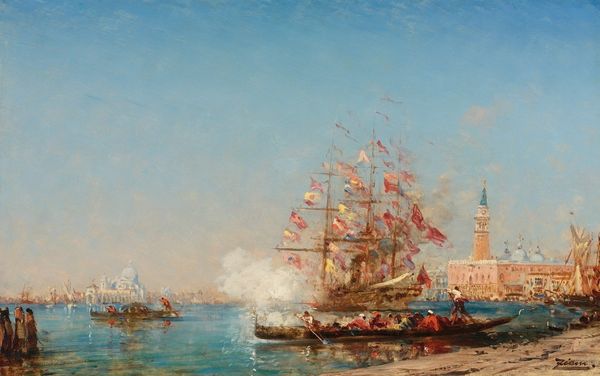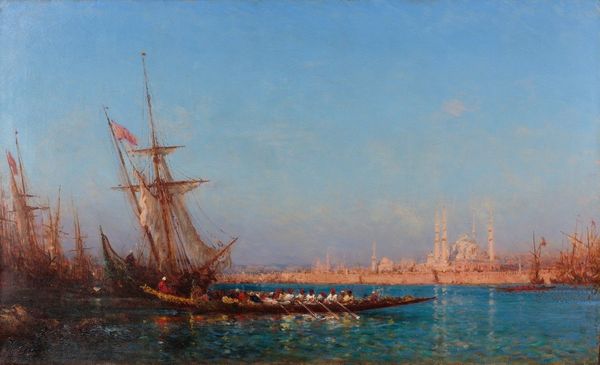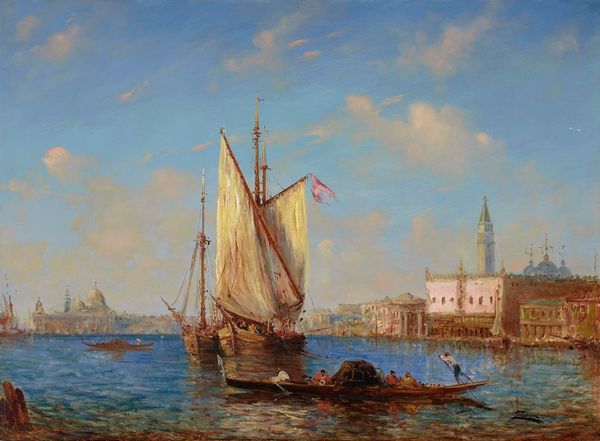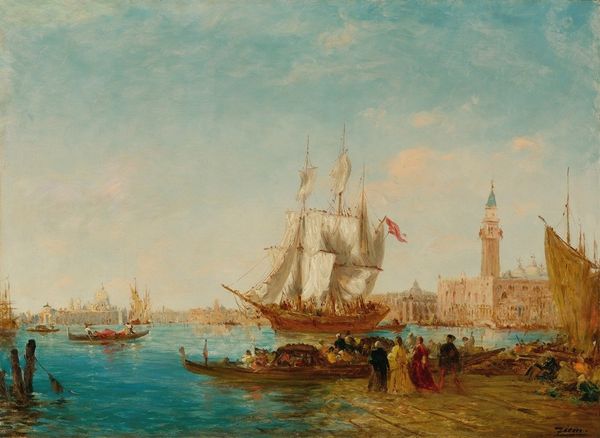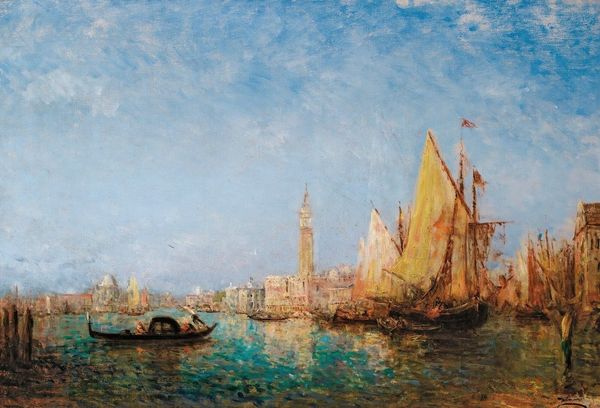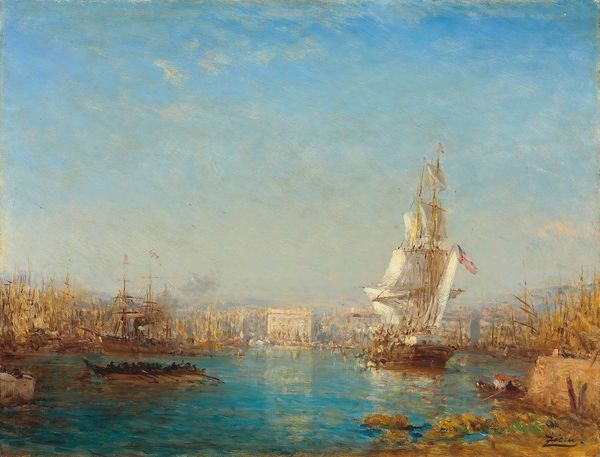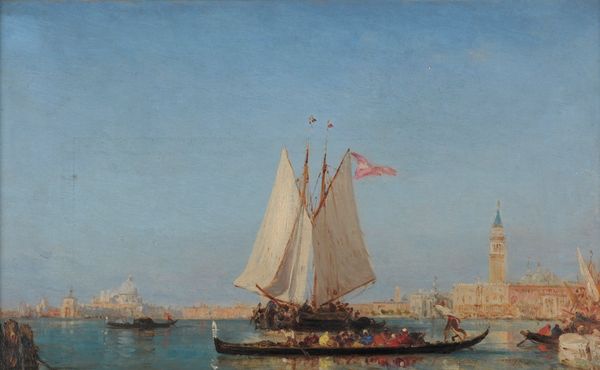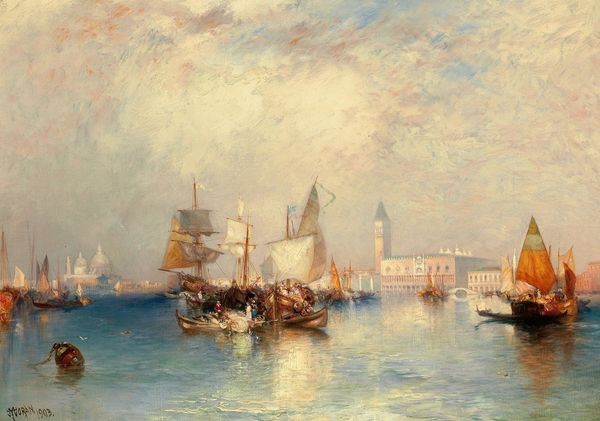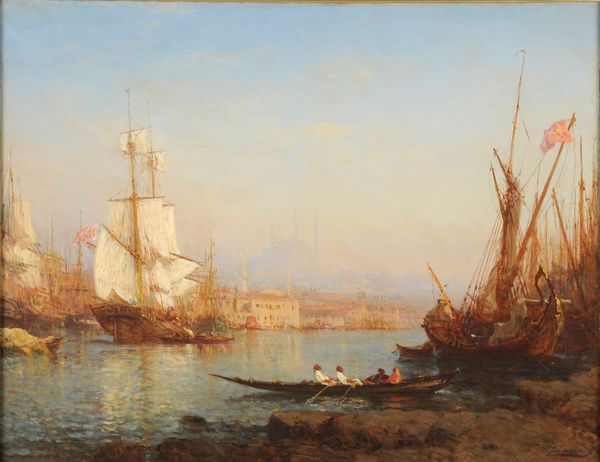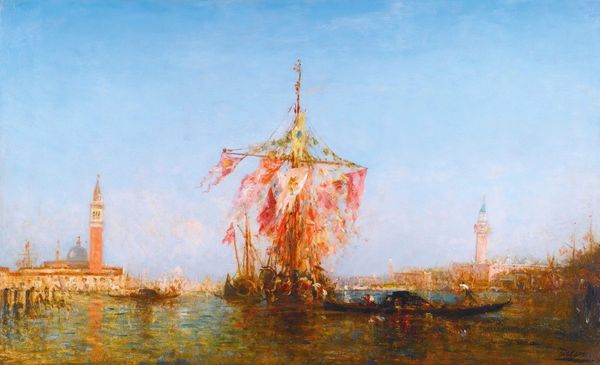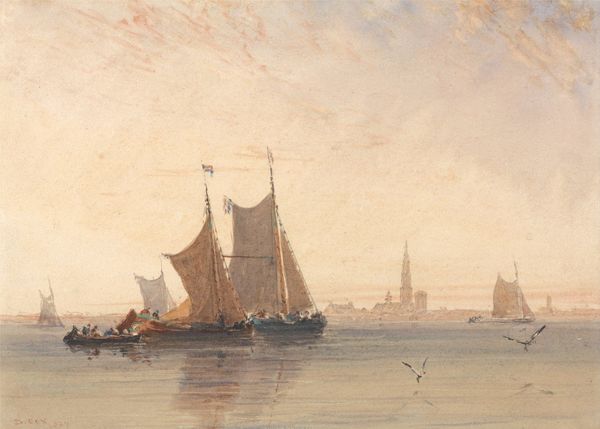
painting, oil-paint
#
venetian-painting
#
painting
#
impressionism
#
oil-paint
#
landscape
#
impressionist landscape
#
oil painting
#
seascape
Copyright: Public Domain: Artvee
Curator: Félix Ziem's "Venice, the Bacino di San Marco," presents a vibrant slice of Venetian life. Ziem, known for his impressionistic landscapes, here captures the energy of the Bacino. Editor: It's remarkably airy. The brushstrokes seem to dance on the canvas, really giving a sense of shimmering light and the hustle of a busy harbor. You almost feel the salty breeze. Curator: Absolutely, and consider Venice during this era—a pivotal trade hub, a site of cultural exchange and luxury production, think of Murano glass, lace... Ziem is capturing a place that signified both opportunity and opulence, particularly for the elite merchant classes who commissioned such works. Editor: Look at how the sailboats almost mirror the reflections in the water; they’re really using light and texture here. One can imagine how each of the boat builders, sailors, glassmakers, and lacemakers along this harbor meticulously and dutifully fulfilled their jobs. This city would be nothing without them. Curator: That labor aspect is key to consider when viewing scenes like these, the undercurrents of global exchange shaping and being shaped by places like Venice. The very materiality of the paintings that followed, pigments transported across vast distances to render scenes like this possible. The canvas and brush that render that material so skillfully, almost lovingly, is telling. Editor: I find myself most drawn to the boats, particularly the gondolas with the covered seating; they provide an intimate look at the life in that period of time, not a straightforward or universal life of pleasure, necessarily, when considering who precisely can access the experience or even access of having the experience as their day-to-day. Curator: I agree, those vessels speak volumes about Venetian society itself: navigating, trading, and conveying both people and goods in a carefully layered society. Ziem really puts us right there in the midst of all that negotiation of wealth and value. Editor: Indeed. And perhaps it’s worth lingering on how our own understanding of labor and class structures informs our contemporary reception of such idealized visions of Venice. Curator: A vital consideration indeed. Editor: This really makes me want to examine not just how and why these things are rendered, but who they were ultimately made to impress, a labor rendered in pigment. Curator: Seeing this artwork again invites me to re-evaluate our own positionality to the Venice and her many cultural products: to rethink the social narratives of places represented.
Comments
No comments
Be the first to comment and join the conversation on the ultimate creative platform.
